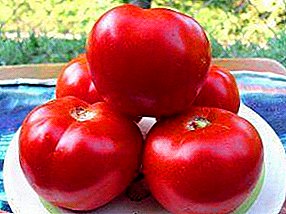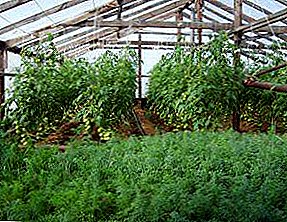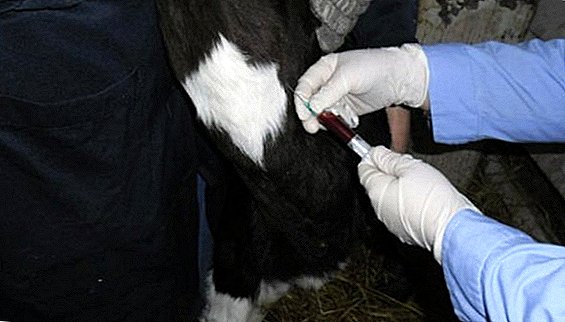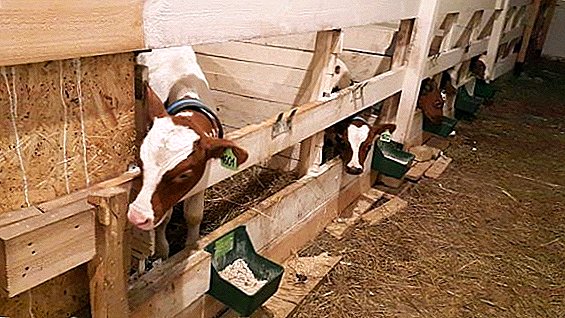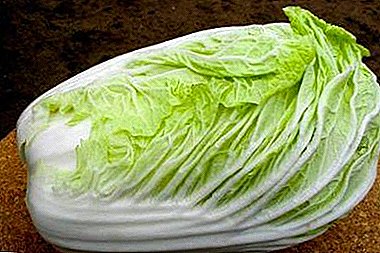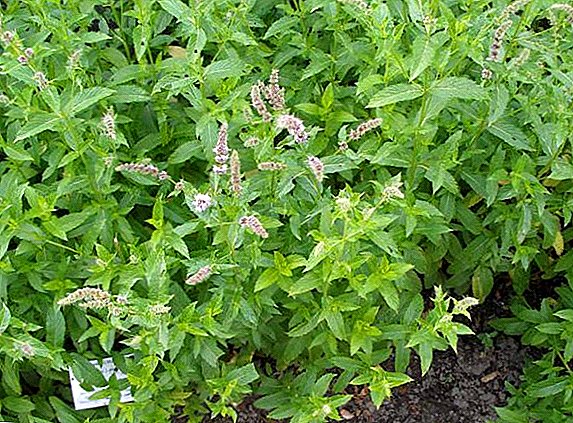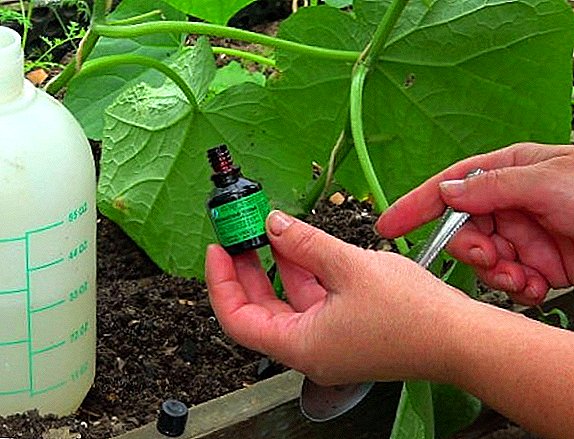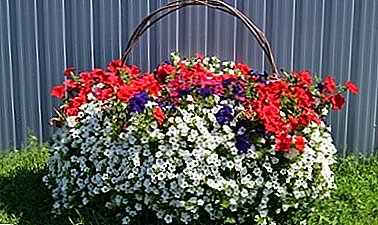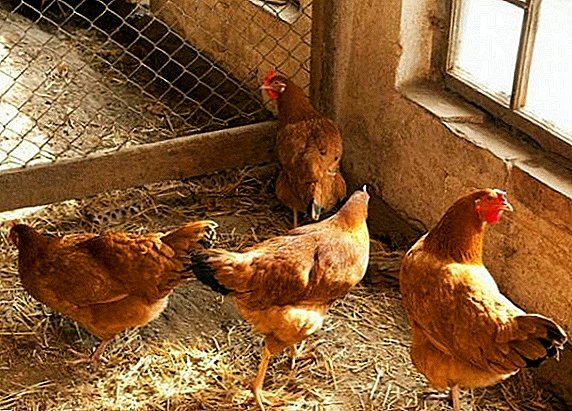 Preparing a chicken coop for the winter period is an important step for a poultry farmer who wants to keep chicken stock and keep his productivity high at this time of year. Particularly relevant issues of preparation for cold weather in regions with a harsh winter. The preparation process includes a number of events, which will be discussed in this material.
Preparing a chicken coop for the winter period is an important step for a poultry farmer who wants to keep chicken stock and keep his productivity high at this time of year. Particularly relevant issues of preparation for cold weather in regions with a harsh winter. The preparation process includes a number of events, which will be discussed in this material.
Features of the content of the coop in the winter
To decide on the necessary arrangements for preparing the house for winter, you need to know in what conditions chickens will feel comfortable enough, do not get sick and maintain good productivity.
Read about how to keep chickens in the winter season.
What birds need for a good wintering
To ensure normal wintering for the poultry, it is necessary to maintain the temperature and humidity at the proper level. In addition, you need to attend to lighting and ventilation system. All these conditions are easier to create in a stationary capital hen house. Mobile structures, when modified for winter conditions, can become excessively heavy, up to the actual loss of their mobility.
What temperature and humidity should be in the hen house
There are breeds of chickens (Russian white, Pushkin striped and motley, Kuchinsky, etc.) that are highly resistant to low temperatures. They practically do not reduce productivity in adverse conditions for other breeds. But for most breeds, it is not allowed to reduce the temperature in the house below 12 ° C. At a lower temperature, the egg production of laying hens is significantly reduced, and among the livestock in some cases, diseases can also begin. Usually in winter they keep the temperature in the range of 12-18 ° С.  Russian white chickens are resistant to low temperatures As for humidity, the optimal value of this indicator is 70%. To allow an increase in humidity of over 75% is highly undesirable - it can cause various diseases in poultry.
Russian white chickens are resistant to low temperatures As for humidity, the optimal value of this indicator is 70%. To allow an increase in humidity of over 75% is highly undesirable - it can cause various diseases in poultry.
What kind of lighting should be in the hen house in winter
The role of lighting in the winter is very important, because due to the short winter day, the productivity of the layers can be significantly reduced, up to an almost complete cessation of egg-laying. Therefore, a short day is compensated by artificial lighting. The use of such lighting should provide a light day lasting approximately 14 hours.
Learn about some of the features of winter lighting in the house, as well as what should be a light day in the hen house.
As light sources you can use:
- incandescent lamps,
- fluorescent lights,
- LED lights.
 LED devices are considered the best option - they are economical and have a long service life.
LED devices are considered the best option - they are economical and have a long service life.
Important! To increase the productivity of layers, it is very useful for artificial light sources to be turned on and off at the same time. You can do it manually, or you can install simple automation.
Ventilation in the hen house in winter
The house must be equipped with a ventilation system. Ventilation will help to save the room from the harmful gases accumulated as a result of the decomposition of litter. In addition, it regulates the value of humidity.
Usually use the supply and exhaust ventilation system. It consists of two ventilation pipes: fresh air, where fresh air enters, and exhaust air, through which air from the room is removed. The pipes are mounted on opposite sides of the hen house. One end of the exhaust pipe is under the ceiling, the other rises above the roof about one and a half meters. The intake pipe rises no more than 30 cm above the roof, its other end is lowered almost to the floor itself, not reaching it by 25-30 cm.  Supply and exhaust ventilation system In some cases, the supply and exhaust system may not be enough. Then mount a forced system in which fans are used. But such a system is usually used in large farms.
Supply and exhaust ventilation system In some cases, the supply and exhaust system may not be enough. Then mount a forced system in which fans are used. But such a system is usually used in large farms.
Read the step-by-step instructions on how to organize the ventilation system in the hen house.
Heating the chicken coop
In regions with a mild climate often do without heating the chicken coop, but in an area with a harsh winter the heating system is relevant. It can be equipped both with the use of electric heaters and without the use of electricity.
Using electricity
Of the electrical appliances for heating the house, oil radiators, convectors and infrared emitters are most often used. Oil radiator has the following advantages:
- it is economical;
- cools slowly when disconnected, continuing to heat the room;
- runs silently;
- fire safe;
- has a long service life.
 Oil cooler But he also has disadvantages:
Oil cooler But he also has disadvantages:
- heating the house is uneven;
- one radiator is able to heat a relatively small room, for large poultry houses several such heaters are required.
 Convector in the chicken coop They provide a more uniform heating, but at the same time they make noise during operation and cost more.
Convector in the chicken coop They provide a more uniform heating, but at the same time they make noise during operation and cost more.A good option for heating a chicken coop is to use infrared lamps. Their advantages are:
- they are inexpensive and economical;
- work silently;
- since they do not heat the air, but objects, they can warm up the litter, preventing it from becoming damp.
- these lamps, besides heat, emit light, therefore they cannot be used at night - this will disturb the daily routine of the hens;
- since these are point sources of heat, it may take several lamps to heat evenly.
 Infrared lamps for heating the hen house To control the temperature of the air in the room you need a thermometer. In order not to be distracted by the on-off heater, you can use a thermostat.
Infrared lamps for heating the hen house To control the temperature of the air in the room you need a thermometer. In order not to be distracted by the on-off heater, you can use a thermostat.
Important! Any electric heaters used in the coop should be isolated from the bird. To do this, use a metal grid, which enclose heat sources.
Without electricity
Instead of electric heating appliances, stove or gas heating can be used.
For furnace heating using metal stove-stove. This system is easily mounted, and any non-toxic combustible materials — wood, pellets (fuel pellets), fuel briquettes, etc. — can serve as fuel. But the furnace has significant drawbacks: it is not fire-safe, requires constant human participation fuel during combustion may produce an unpleasant odor.
For heating, you can use a diesel furnace that uses diesel fuel. This furnace is more fireproof, economical, compact. Modern diesel stoves are equipped with a control system that turns off the stove when it overheats.  Diesel furnace for heating the disadvantages of the "stove" is devoid of gas heating system. But it requires professional installation, it has a high cost, and the gas itself is a fairly expensive fuel. Gas heating is usually used in large farms.
Diesel furnace for heating the disadvantages of the "stove" is devoid of gas heating system. But it requires professional installation, it has a high cost, and the gas itself is a fairly expensive fuel. Gas heating is usually used in large farms.
We recommend to learn how to make a chicken coop out of a greenhouse.
In addition to the above methods, you can organize the so-called "natural heating". To do this, do the following:
- the poultry house is poured with quicklime at the rate of 1 kilogram of lime per square meter of floor;
- the second layer is covered with bedding (peat, chopped straw or sawdust), layer thickness - 8-10 cm;
- over time, as the litter is tamped down, sprinkle fresh material; the old litter is not removed, but it is periodically loosened.
Did you know? The invention of the stove "potbelly" attributed to Benjamin Franklin. In the US, it is called the potbelly stove, which can be translated as "fat belly". In Japan, a furnace of this type is associated with the doll “darum”.
Natural warming of the hen house with his own hands
All of the above efforts to organize heating of the house can go to ashes if the heat is not kept indoors. Therefore, it is necessary to warm the floor, walls, ceiling, doors and windows.
Floor
Peat, sawdust, small chips or straw, which are covered with a continuous layer with a thickness of 8-10 cm, are used to warm the floor.  Sawdust is a great option for insulation for poloNo before it is required to fill the floor with hydrated lime to avoid the appearance of ticks and fleas. The litter itself can serve as a source of heat. How to organize such natural heating correctly is shown above in the section "Without the use of electricity".
Sawdust is a great option for insulation for poloNo before it is required to fill the floor with hydrated lime to avoid the appearance of ticks and fleas. The litter itself can serve as a source of heat. How to organize such natural heating correctly is shown above in the section "Without the use of electricity".
Walls
Materials for the inner lining of the hen house can be very different: board, plywood, drywall, OSB (OSB), lime-coated plaster. As a heater, mineral wool or foam is most often used - these are the most practical options.
It is also worth getting rid of pests in the hen house: fleas, ferrets, rats.
You can still insulate the walls using sprayed polyurethane foam, but it is quite expensive material, besides for its application requires special equipment and certain qualifications of the performer. You can make insulation yourself - a mixture of clay and shavings, which plastered walls covered with shingles. Mineral wool can be laid both outside and inside the house.  Thermal insulation of walls with mineral wool The sequence of actions for wall insulation is as follows:
Thermal insulation of walls with mineral wool The sequence of actions for wall insulation is as follows:
- First make a crate of bars with a section of 50x50 mm, which are attached to the walls vertically. Bars must be installed in the corners of the room. The distance between the bars should be done slightly less (about 30-40 mm) of the width of the sheets of insulation - this will ensure its tight installation.
- Further, a vapor barrier film is laid on the walls with the help of a construction stapler with overlap; it will prevent the penetration of moisture from the outside.
- Then mineral wool is laid, it is fastened to the wall with “fungi” (fasteners with a wide hat). Outside, it is again covered with a layer of vapor barrier film.
- The wall is usually not left in this form - the insulation is sheathed with plywood, clapboard, etc. The material is fixed to the batten bars.
Did you know? Stone mineral wool was first made in the USA in 1897. The idea of its production was prompted by the natural phenomenon "Pele's Hair", noted in the Hawaiian archipelago - these are thin filaments formed from volcanic rocks during a volcanic eruption.
The same technology can be used when using foam as insulation. Joints between the sheets of foam can be sealed with foam. Since chickens quickly peck foam, it is sheathed outside with any suitable material. When insulating walls with this material, you can do without crates.  To do this, perform the following actions:
To do this, perform the following actions:
- Foam sheets laid on the floor, primed and plastered (cement plaster).
- Three days later, the foam is attached to the walls, using for this "fungi" - fasteners with a wide plastic cap. The gaps between the sheets are sealed with foam.
- The foam is again covered with plaster, then the plaster is whitened.
- 3 mm plywood, painted with oil paint;
- then 10 mm foam sheets;
- the next layer is made of 20 mm boards;
- outside the chicken coop is upholstered with galvanized iron.
Ceiling insulation
The ceiling is usually warmed with mineral wool or foam. The process of laying insulation is the same as described above for the walls: creating a batten, laying a vapor barrier film, laying insulation, installing a finishing material (plywood, wall paneling, OSP-plate, etc.). If there are ceiling beams on the ceiling, then these beams can be used instead of battens.
It is useful to learn about the features of the use of fermentation litter for chickens.
Doors and windows
 The windows in the chicken coop are made with double glazing and do not open, as they serve not for ventilation, but only for natural lighting.
The windows in the chicken coop are made with double glazing and do not open, as they serve not for ventilation, but only for natural lighting.
In winter, the window can be further warmed by tightening the window opening with a transparent polyethylene film. The doors, both large and small, for the release of a bird, must be tightly closed. They can be insulated by padding.
So, it is necessary to prepare the chicken coop for the winter. Without insulation of the floor, ceiling, walls, windows and doors, proper organization of heating and ventilation, the conditions of stay for chickens will be uncomfortable. At best, they will survive in the cold, but fresh eggs can be forgotten for the entire winter period. Therefore, it is better not to save money and equip the house with everything necessary, especially since the results of these works will last for at least several years.


